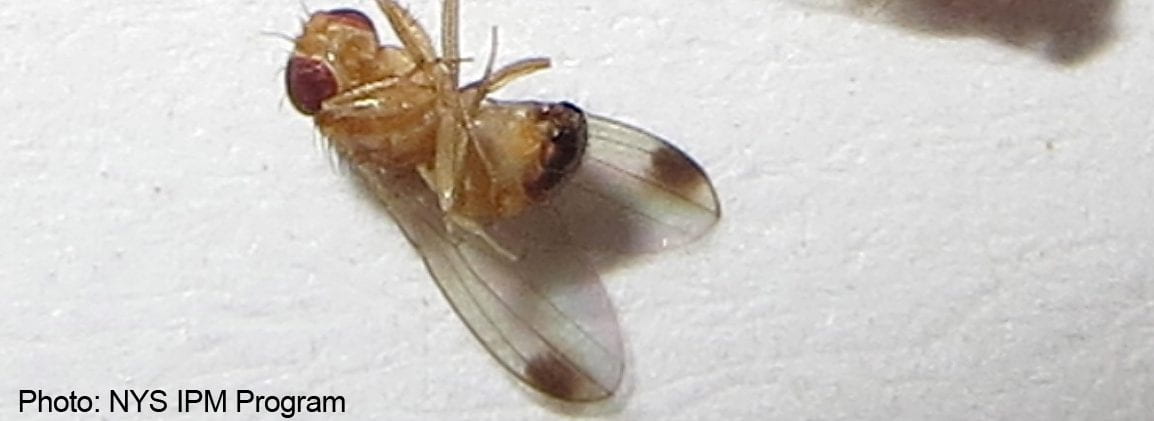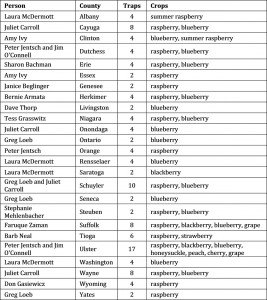Dr. Greg Loeb’s entomology research program, Cornell University, Geneva, NY, has caught 3 SWD females in traps set on the edge of a blueberry planting that is adjacent to woods in Ontario County. This blueberry planting is often the site where Greg’s program catches SWD first. Traps were set out on May 31st and checked on June 7th, which indicates the SWD were caught sometime during that week. The good news is that the blueberry crop is not ripe and therefore not vulnerable to oviposition at this site.
This is the earliest that SWD has been caught in New York State since monitoring began in 2012. The mild winter that occurred in New York, with only one significant cold snap around February 14th, may have contributed to early arrival and overwintering success of SWD. Mild winters and early SWD arrival is the typical situation that is now found in Europe with this invasive insect.
Research by Dr. Anna Wallingford, a post-doctoral associate in Greg’s lab, and others is finding that SWD goes into reproductive diapause in the late fall during which time egg laying ceases and overwintering survivability increases. The traps used to catch these three females were baited with a fermenting lure that is being researched by a team at Rutgers the State University of New Jersey. This same team has research that is underway, on the female SWD caught in these fermenting lure traps, to determine if these early-arrival females are ready to lay eggs.
There is no doubt, the SWD season has begun in New York and it looks as if the 'mild winter early arrival' predictions may prove true. Please note: this finding won't show up on the SWD distribution map, because research trap sites aren't part of the 'map-reporting' monitoring network.
Get ready to protect your crop, find more information on Cornell Fruit Resources:
Spotted Wing Drosophila, www.fruit.cornell.edu/spottedwing/
Easy to make whole wheat dough trap, www.fruit.cornell.edu/spottedwing/pdfs/SWDTraps_CornellFruit.pdf
SWD distribution map in NY, www.fruit.cornell.edu/spottedwing/dist.html
SWD management, www.fruit.cornell.edu/spottedwing/mgmt.html
Insecticide quick reference table for berries, www.fruit.cornell.edu/spottedwing/pdfs/swd-insecticides-berries-ny.pdf
Insecticide quick reference table for stone fruit and grapes, www.fruit.cornell.edu/spottedwing/pdfs/swd-insecticides-grapes-treefruit-ny.pdf
Guidelines for checking fruit for SWD, www.fruit.cornell.edu/spottedwing/pdfs/SaltFloatation.pdf



